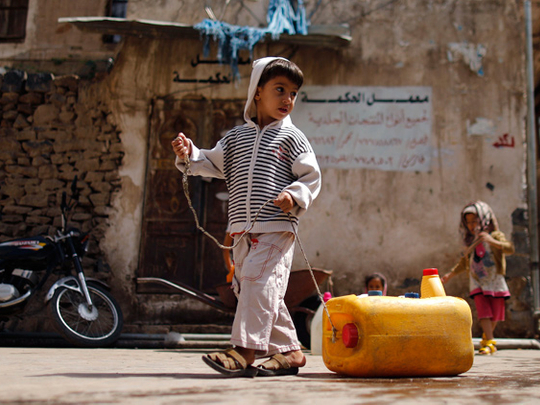
Geneva: Nearly half of Yemen’s population is going hungry, the UN’s food agency has warned, saying it was scaling up its aid to the impoverished country.
More than 10 million of Yemen’s some 25 million inhabitants are either severely food insecure — meaning they require food assistance because they cannot find enough food for themselves — or teetering on the edge, the World Food Programme said on Friday.
The country has one of the world’s highest levels of malnutrition among children, with nearly half of all kids under the age of five — a full two million of them — stunted, WFP spokeswoman Elisabeth Byrs told reporters.
A million of those kids are acutely malnourished, she said.
The problem is difficult to tackle.
Yemen, one of the world’s poorest countries, has been going through a difficult political transition since veteran president Ali Abdullah Saleh was ousted in February 2012 after a year of deadly protests against his 33-year rule.
The country is struggling with endemic poverty, political instability, large-scale displacement of Yemenis and refugee influxes from other countries, civil strife and rife insecurity.
At the same time, Yemen is particularly vulnerable to international hikes in food prices, since it imports up to 90 per cent of its main staple foods like wheat and sugar, Byrs pointed out.
In a bid to try to get the situation under control, WFP is scaling up its food assistance programme to Yemen, where it already provided aid to some 839,000 people last month, she said.
Starting in July, the UN agency plans to launch a special two-year “Recovery Operation”, aimed at addressing long-term hunger and helping ensure food stability for some six million people.
Under the programme, the UN agency will, among other things, provide malnutrition prevention and treatment, give 200,000 girls in school take-home rations of food, and will help create rural jobs, improve agriculture and water supplies, Byrs said.
The aid increase will be costly, she said, with the agency estimating the two-year programme will cost around $491 million (Dh1.8 billion; 360 million euros).
So far however, WFP remains $117.5 million short to cover its operations just until the end of this year, Byrs said.












